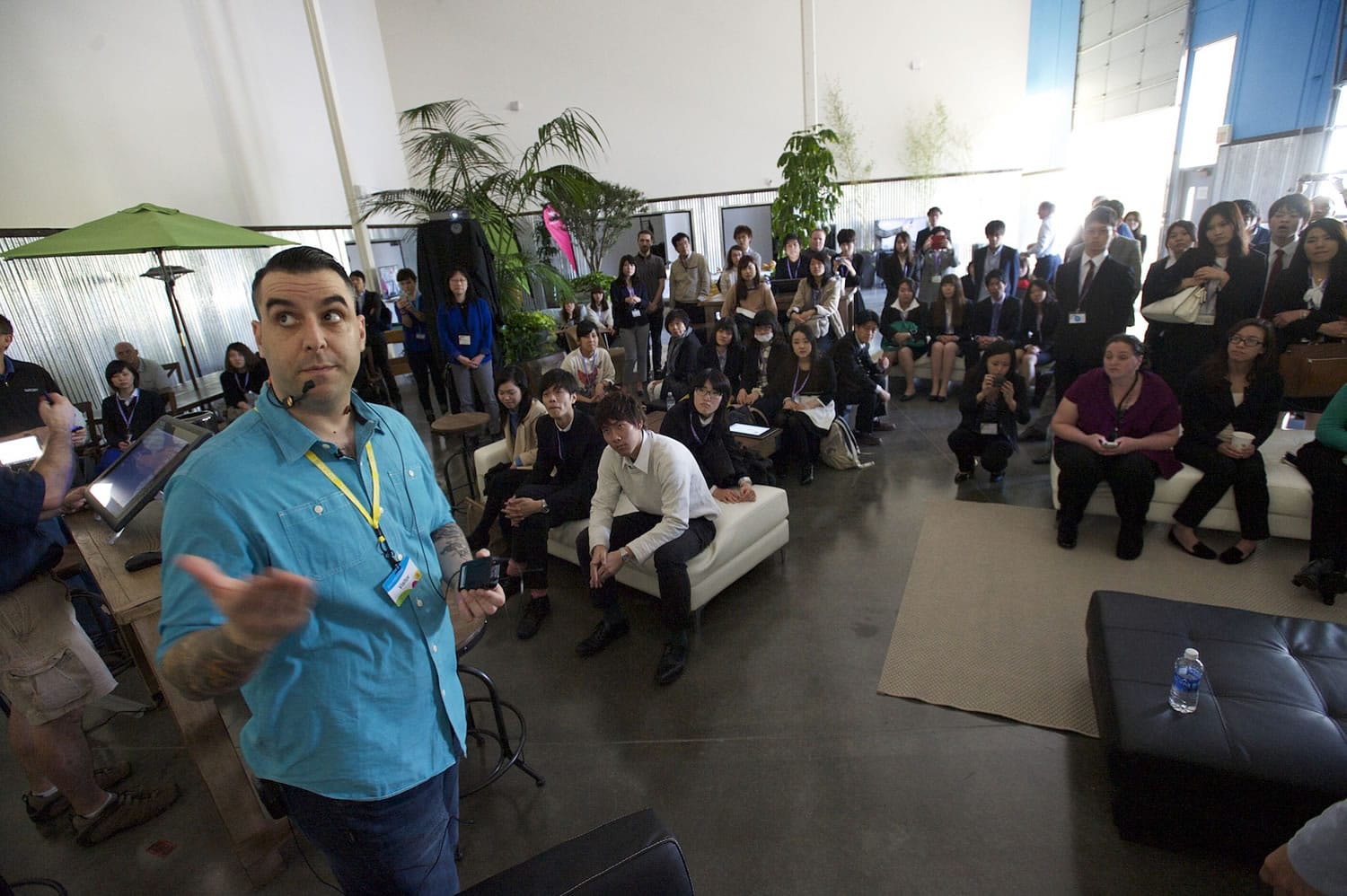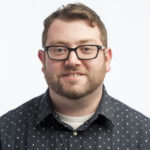Wacom played host to some first-time Vancouver visitors on Thursday, some from farther away than others.
The interactive pen-and-display maker, which has its American headquarters in Vancouver, welcomed a group of 55 college students from Osaka, Japan, to its campus on Thursday. They were there for a presentation by Los Angeles-based artist Jason Scheier, who has used Wacom products for more than a decade but never visited the company.
The presentation was part of the Kakehashi Project, a student exchange program between Japan and America funded by the Japanese government. It came the same day that Wacom disclosed that it would relocate its headquarters for the Americas to Portland’s Pearl District, leaving a small number of employees in Vancouver.
The visting students receive a fully funded 10-day trip, and the groups travel around visiting different schools and businesses. There are currently 163 students from seven Japanese universities visiting America, with students from five colleges spending time in Portland and the other two groups coming to Vancouver on Thursday. The American students in the program will visit Japan in the summer. The project is in its second year, and this is the first time it stopped in Vancouver or visited Wacom, which has headquarters in Tokyo.
“Tech is the thing right now,” said Mari Maruyama, vice president of The Laurasian Institution, a Seattle-based nonprofit that organizes the American legs of the trip. “We wanted to show the students Wacom, as it’s a global organization, with ties here in America and in Japan.”
The group was looking for a stop near Portland, because the trips to America have to start and end in a city with a Japanese consulate. The current group started in Seattle and will end their trip in Portland this week. The Japanese students also visited Yamasa, a soy sauce company with a factory in Salem, Ore.
“With Yamasa and Wacom, we thought it would be interesting to show the students how a company with locations in both Japan and America operates,” said Daniel Martin, a program associate with Laurasian. “We try to give the students a wide range of places to visit all over. We’ve had some go as far as Charlotte, N.C. We try to show them America in a nutshell.”
Maruyama knew Jim Mockford, a software engineer at Wacom, and reached out about bringing the students to see the company. She knew Mockford would like the program because of his interest in Japanese culture, as Mockford used to teach Japanese at Camas High School. When Mockford heard about the opportunity, he was excited to bring the students to Vancouver.
The idea for having an artist demonstrate the technology came from Doug Little, Wacom’s senior public relations manager. Little then reached out to Scheier, who works primarily on concept design. Scheier has also worked on video games and spent six years as a visual development artist for DreamWorks Animation, working on films such as “Kung Fu Panda,” “The Croods” and “How To Train Your Dragon 2.”
“When Doug asked me, I was excited to come meet with the students and show them what I do,” he said. “I’ve been using (Wacom) products for as long as I can remember. They are part of the artist community and culture.”
During his presentation, Scheier showed the students some of his work and used a Cintiq 22HD to draw a detailed landscape picture of a river running through some rocks and boulders in about 30 minutes. A chaperone from the group translated Scheier’s presentation, as well as any questions students had.
“We want the students to interact with people when they visit, and form networks or friendships” Martin said. “We want to show them all the different options for places to live or work in America, if they decide to want to come back at some point, and a place like Wacom is a great place for them to see. It was probably one of the highlights of this trip.”




